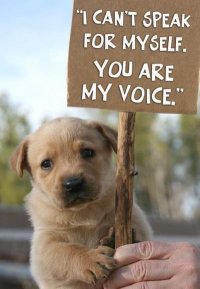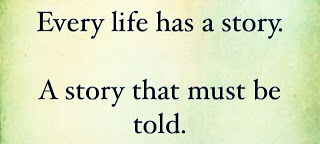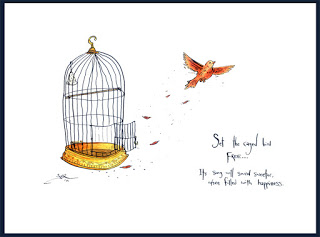===============================================================================================================================================================================================
PROJECT TWO: SAVING ANIMALS THROUGH WRITING
P2: The experiment: extending the sympathetic imagination to a an endangered species
WHAT IS DUE: an essay in blog format* of at least fourteen-hundred words that must include multimedia (at least one video and three stills of the animal), at least the two required citations (ONE CITATION MUST BE FROM A PRINTED BOOK NOT FOUND ON THE INTERNET), and endnotes (*footnotes become endnotes). Must include the animal's point of view about climate crisis. Must be acceptable college-level writing. Must end with accurate word counts both with and without quotations.
Online version: AT THE VERY TOP OF THE FIRST PAGE MUST APPEAR IN LARGE TYPE THE THREE RUBRICS ASSIGNED BY THE INSTRUCTOR FOR IMPROVEMENT IN P2,




Why this assignment? It focuses on a current topic and strengthens the foundation of ethics, the sympathetic imagination, which enhances in turn enhances the ultimate ethical virtue, compassion.
===================================================================
P2 consists of two sections
[1] P2A THE EXPERIMENT: TRYING TO EXTEND SYMPATHETIC IMAGINATION TO ANOTHER BEING ENDANGERED BY THE CLIMATE CRISIS [at least 700 WORDS ]
examples in various stages of development, with somewhat different criteria
WOMBAT SEA HORSE SEA TURTLE FILEFISH HARP SEAL STOAT
HONEYBEE MONARCH BUTTERFLY STAGHORN CORAL
Two other examples cited briefly by instructor on Youtube: https://youtu.be/4vuIYHzv16s
[2]P2B: the science behind the claim that the climate crisis threatens the survival of this species [at least 700 WORDS ]
Some animal possibilities for P2:
-
Orange-spotted filefish (Oxymonacanthus longirostris). The filefish dwells in coral reef habitats, on which it is totally dependent, and which themselves are declining in part due to climate change. In addition, the orange-spotted filefish is highly sensitive to warm water: The animal went extinct in Japan during an episode of warmer ocean temperatures in 1988.
-
• Quiver tree (Aloe dichotoma). This succulent tree is endemic to (and emblematic of) the arid west of South Africa and Namibia. Chapter Four of the fifth IPCC report "shows, for the first time, that the rate of climate change can be just as important for species survival as the magnitude, and that trees are the most vulnerable to rapid change," Scholes said. A well-studied species, the quiver tree is unable to grow and disperse quickly enough to keep up with a fast-changing climate. (Related: "Rain Forest Plants Race to Outrun Global Warming.")
-
• Polar bear. The large predator's story is well known: The Arctic sea ice on which the animals hunt is progressively disappearing during the summer. Sea ice is forming later in the fall and disappearing earlier in the spring. "As the Arctic sea ice retreats, polar bears have to exploit alternative food sources, such as on land," the scientists said, and some hungry polar bears have turned to goose eggs. But it's not the best alternative, Steven Amstrup, chief scientist for Polar Bears International, noted in a previous story. "Some media reports have suggested that this might mean polar bears could just come ashore and eat terrestrial foods and somehow do fine without the sea ice," Amstrup said. "We have absolutely no evidence that they have the ability to do this." (Read "On Thin Ice" in National Geographic magazine.)
-
• Adélie penguin. These Antarctic birds mostly live on tiny crustaceans called krill. Krill live on the undersides of ice sheets, where they find refuge and algae as food. But as Antarctic sea ice retreats, krill populations are falling—meaning that the penguins have to migrate farther to find food. Spending a lot more energy to find food makes penguins less successful at breeding and raising young, the scientists said.
-
• North Atlantic cod. Overfishing has historically caused numbers of this fish to plunge, but its populations usually bounce back. Not so off the northeastern coast of North America, where populations have not recovered since crashing in the 1990s. "The entire ecosystem seems to have changed," the scientists said, and "this may involve a climate influence due to changing ocean currents and the influx of cold Arctic waters." (Read more about overfishing's impact on New England cod.)
-
• Acropora cervicornis and coral worldwide. This reef-building animal "is in decline almost everywhere, for a combination of reasons," said Pörtner, including warming waters—coral are sensitive to changes in ocean temperature. Acropora cervicornis, for instance, used to be widespread in the Caribbean but is now restricted to a few small areas, likely due to warming. (Read more about coral and global warming.)
-
• EXTINCT: Golden toad (Bufo periglenes). Along with the Monteverde harlequin frog (Atelopus varius), also of Central America, the golden toad is among the very small number of species whose recent extinction has been attributed with medium confidence to climate change, according to Scholes and Pörtner. Last seen in 1989, the golden frog lived in mountaintop cloud forests that have disappeared due to drought and other climatic changes. Other confounding factors are involved, such as the deadly chytrid fungus, which has killed off many amphibians worldwide. (See: "Photos: Ten Most Wanted 'Extinct' Amphibians.")
-
http://news.nationalgeographic.com/news/2014/03/140331-global-warming-climate-change-ipcc-animals-science-environment/
-
=============================================================================================================================================================
-
Examples of species that are particularly climate sensitive and could be at risk of significant losses include animals that are adapted to mountain environments, such as the pika; animals that are dependent on sea ice habitats, such as ringed seals and polar bears; and coldwater fish, such as salmon in the Pacific Northwest.[4][5]
-
4] USGCRP (2014). Groffman, P. M., P. Kareiva, S. Carter, N. B. Grimm, J. Lawler, M. Mack, V. Matzek, and H. Tallis, 2014: Ch. 8: Ecosystems, Biodiversity, and Ecosystem Services. Climate Change Impacts in the United States: The Third National Climate Assessment, J. M. Melillo, Terese (T.C.) Richmond, and G. W. Yohe, Eds., U.S. Global Change Research Program, 200-201.
[5] USGCRP (2009). Global Climate Change Impacts in the United States. "Climate Change Impacts by Sectors: Ecosystems." Karl, T.R., J.M. Melillo, and T.C. Peterson (eds.). United States Global Change Research Program. Cambridge University Press, New York, NY, USA.
- =============================================================================================================================================================
red knot [ bird ]; desert tortoise; bobcat ; sea stars; caribou ; sage grouse ;
all discussed at http://www.nature.org/ourinitiatives/regions/northamerica/climate-change-impacts.xml
right whale, etc. discussed at
http://kanat.jsc.vsc.edu/student/swift/mainpage.htm
Grey-headed Robin, Lemuroid Ringtail Possum discussed at
https://en.wikipedia.org/wiki/Effects_of_climate_change_on_terrestrial_animals
artic birds and walrus, herring, snowy owls, skuas, weasels and ermine. reindeer, discussed at
http://www.greenfacts.org/en/arctic-climate-change/l-2/5-arctic-animals.htm
=============================================================================================================================================================
HOW WILL P2 BE GRADED?
_________: (part one), up to 30 points: a monologue from the point of view of the animal (at least seven-hundred words)
REQUIREMENT: YOU MUST INCLUDE THE ANIMAL'S POINT OF VIEW ABOUT IMPACT OF CLIMATE CRISIS
________: (part two) the science behind the plea to save the species; up to 30 points:
_________ good transition from the animal's point of view to scientific info. Up to 10 points
________ plus points for good writing, detail, insight, etc.
______ points from the three rubric categories designated for P2 (up to 140 points) -3 for each error or infelicity in each of your three P2 rubrics
_________deductions from other rubric categories
_______ deductions for missing items from folder and/or missing requirements: an essay in blog format* of at least fourteen-hundred words that must include multimedia (at least one video (put on youtube and supply URL) and three stills of the animal), at least the two required citations, and footnotes Must include the animal's point of view about climate crisis. Must end with accurate word counts both with and without quotations.
>===================================================================
P2B FINAL VERSION
WHAT SHOULD BE IN THE FOLDER TO BE HANDED IN?
[1] YOUR FINAL COPY CLEARLY MARKED AS "FINAL COPY. " and with the three categories for evaluation clearly marked. FORMAT: DOUBLE-SPACED, WITH A TITLE, PAGE NOS., and FOOTNOTES AT THE BOTTOM OF THE PAGES, using the University of Chicago footnote method. [see below] LAST PAGE SHOULD PROVIDE THE WORD COUNT (both with and without quotes) AND THE U.R.L. OF THE BLOG VERSION.
[1A] Part one (at least 700 words from the points of view of the animal)
[1B] A good transition
[1C] Part two: At least seven-hundred more words explaining the science behind the claimed threat to this species
_______________________________________________________________________
ALSO IN THIS FOLDER SHOULD BE these and only these related materials
[2] The P1 rubric evaluation form from me and the P1 final essay edited by me, with my marks on the copy or -50
[3] A COPY OF YOUR ORIGINAL DRAFT of P2B, THE ONE YOU UPLOADED TO CANVAS;
[4] ALL CRITIQUES YOUR COLLEAGUES MADE OF YOUR PROJECT, PUT INTO A SINGLE WORD DOCUMENT, WITH THE NAME OF THE REVIEWER and the color code AT THE TOP OF EACH CRITIQUE.
[5] A SECOND DRAFT WITH ALL THE CHANGES YOU MADE IN RESPONSE TO ALL THE CRITIQUES, WITH CHANGES NOW HIGHLIGHTED AND COLOR-CODED TO SHOW WHICH CHANGES WERE MADE IN RESPONSE TO TO WHICH REVIEWER, INCLUDING ANY MADE IN RESPONSE TO THE INSTRUCTOR'S CRITIQUES OF P1.
_______________________________________________________________________